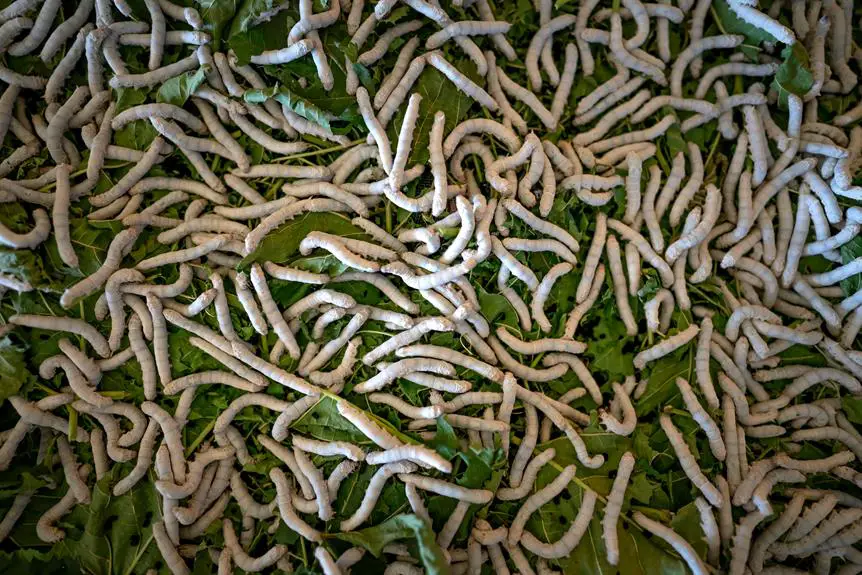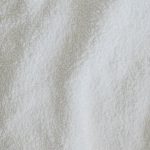When you consider the production of Oxford fabric, it's hard to ignore the significant environmental challenges it presents. From excessive water use to harmful chemical runoff, the manufacturing process raises serious concerns. As you explore the implications of these practices, you might find yourself questioning how sustainable options could reshape the industry. What steps can be taken to lessen the impact of this widely used material, and are there alternatives that truly make a difference? Understanding these aspects could lead you to some surprising insights.
Table of Contents
Overview of Oxford Fabric
Oxford fabric is a durable, versatile textile commonly used in shirts, bags, and various other applications.
Its unique weave, often characterized by a basket-like pattern, not only adds visual appeal but also enhances its strength and longevity. When you wear an Oxford shirt, you're likely enjoying a soft, breathable material that holds up well against daily wear and tear.
This fabric typically consists of cotton or a cotton-blend, making it comfortable for both casual and formal settings. You'll find it in everything from classic dress shirts to stylish backpacks. The smooth finish and crisp look make it a popular choice for professional attire, while its resilience ensures it can withstand the rigors of everyday life.
In addition to its practical benefits, Oxford fabric is often easy to care for, as it can be machine washed without losing its shape or color.
This combination of durability, versatility, and ease of maintenance contributes to the widespread appeal of Oxford fabric across various markets. Whether you're dressing up for work or heading out for a casual day, you can rely on this textile to meet your needs effectively.
Raw Materials and Sourcing
To create Oxford fabric, manufacturers primarily rely on high-quality cotton or cotton-blend fibers sourced from sustainable farms. These farms often prioritize environmentally friendly practices, such as organic farming methods, which help reduce the use of harmful pesticides and fertilizers. By choosing cotton from these sources, you're supporting a more sustainable textile industry.
In addition to cotton, some manufacturers incorporate recycled materials into their blends. This practice not only reduces waste but also lowers the overall environmental footprint of the fabric.
When sourcing materials, it's essential for manufacturers to ensure that their suppliers adhere to ethical labor practices, promoting fair wages and safe working conditions for all workers involved in the cotton production process.
Moreover, the transportation of raw materials plays a significant role in the environmental impact. Sourcing fibers locally can greatly minimize carbon emissions associated with shipping.
As a consumer, you can influence this process by choosing brands that are transparent about their sourcing practices and prioritize sustainability. By being mindful of where your fabric comes from, you contribute to a more environmentally responsible fashion industry that respects both the planet and its people.
Manufacturing Processes
The manufacturing processes for Oxford fabric involve several key steps that can significantly impact its overall environmental footprint.
First, you'll find that the weaving process uses a blend of cotton and synthetic fibers, creating a durable yet versatile fabric. This step requires precise control over machinery, which can lead to energy consumption that contributes to carbon emissions.
Next, dyeing and finishing processes come into play. These steps often utilize chemical treatments to enhance the fabric's properties, such as water resistance and colorfastness. While these treatments can improve durability, they can also introduce potentially harmful substances into the environment if not managed responsibly.
Quality control is another critical phase, where you ensure the fabric meets industry standards. This step, while essential for product longevity, may involve additional energy and material use.
Water Usage and Pollution
When you consider the production of Oxford fabric, water usage and pollution become critical issues.
You'll find that the manufacturing process consumes significant amounts of water, leading to potential shortages.
Additionally, the chemical runoff from this process can severely impact local ecosystems, raising concerns about environmental health.
Water Consumption Levels
Oxford fabric production demands significant water resources, leading to both high consumption levels and potential pollution issues. When you consider the entire manufacturing process, from dyeing to finishing, the amount of water used can be staggering. You'll find that several liters of water are needed for every meter of fabric produced. This high demand places a strain on local water supplies, especially in regions where water is already scarce.
Moreover, the water used in production often becomes contaminated with various pollutants. As you engage with this industry, it's crucial to understand that excessive water consumption not only undermines local ecosystems but also impacts the communities relying on those water sources.
You'll notice that many manufacturers are now seeking to improve their water management practices, implementing recycling systems and reducing water usage. However, the challenge remains significant.
If you're invested in sustainable practices, it's essential to advocate for better regulations and transparency in the production process. By doing so, you can contribute to a more responsible approach towards water consumption in the textile industry, particularly in the production of Oxford fabric. Your awareness can help drive change for a greener future.
Chemical Runoff Effects
Chemical runoff from Oxford fabric production can severely impact local waterways, introducing harmful pollutants that threaten both aquatic life and community health. When chemicals used in the dyeing and finishing processes leach into the water, they can lead to toxic concentrations that disrupt ecosystems. You mightn't realize it, but these pollutants can cause significant harm to fish and other organisms, affecting their reproduction and survival rates.
As pollutants accumulate, they can also enter the drinking water supply, jeopardizing your health and that of your loved ones. Heavy metals, dyes, and solvents can contaminate water sources, leading to serious health risks, including respiratory issues and skin irritations. This contamination can also affect agricultural practices, as farmers who use this water for irrigation may inadvertently introduce these toxins into the food chain.
To combat these issues, it's crucial to advocate for stricter regulations on chemical use in fabric production and support sustainable practices. By raising awareness and choosing eco-friendly textiles, you can help mitigate the harmful effects of chemical runoff, protecting both the environment and your community's well-being.
Carbon Footprint
The carbon footprint of Oxford fabric production significantly contributes to environmental degradation, impacting our planet's health. When you consider the entire production process, from raw material extraction to manufacturing, it generates substantial greenhouse gas emissions. These emissions primarily come from the energy-intensive processes involved in weaving and finishing the fabric.
You may not realize it, but the production often relies on fossil fuels for energy, which further exacerbates the situation. Each stage of production requires resources, and the more resources you use, the higher the carbon footprint. Transportation also plays a crucial role; when you ship materials and finished products, you're adding more emissions to the equation.
Moreover, the disposal of Oxford fabric can contribute to its carbon footprint. If the fabric ends up in landfills, it can take years to decompose, releasing methane—a potent greenhouse gas—into the atmosphere.
It's essential to acknowledge these impacts, as they highlight the urgent need for more environmentally friendly practices in the textile industry. Reducing the carbon footprint isn't just beneficial; it's necessary for the well-being of our planet and future generations.
Sustainable Alternatives
Finding sustainable alternatives to traditional Oxford fabric production can significantly reduce the environmental impact associated with its carbon footprint. One effective approach is to explore eco-friendly materials like organic cotton, hemp, or recycled polyester. These materials not only minimize resource consumption but also promote a circular economy.
Here's a quick comparison of some sustainable alternatives:
| Material | Benefits |
|---|---|
| Organic Cotton | Grown without harmful pesticides, more sustainable water usage |
| Hemp | Requires less water, grows quickly, and enriches soil |
| Recycled Polyester | Diverts plastic waste from landfills, reduces energy use |
| Tencel | Made from sustainably sourced wood, biodegradable |
Frequently Asked Questions
What Are the Long-Term Effects of Oxford Fabric on Ecosystems?
You might notice that the long-term effects of any fabric can include habitat disruption, pollution accumulation, and resource depletion. It's crucial to consider these factors when evaluating materials for sustainability and environmental health.
How Does Oxford Fabric Recycling Work?
Oxford fabric recycling involves collecting used materials, sorting them by type, and processing them into new fibers. You can contribute by properly disposing of your fabric waste, ensuring it's sent to recycling facilities for repurposing.
Are There Certifications for Eco-Friendly Oxford Fabric?
Yes, there are certifications for eco-friendly Oxford fabric. Look for labels like Global Organic Textile Standard (GOTS) or OEKO-TEX, which indicate sustainable practices and non-toxic materials. These certifications help you make informed, eco-conscious choices.
What Are the Health Risks Associated With Oxford Fabric Production?
When you consider the health risks of Oxford fabric production, you might encounter exposure to chemicals, respiratory issues, and skin irritations. It's crucial to understand these potential hazards when choosing materials for your projects.
How Do Consumer Choices Influence Oxford Fabric Sustainability?
Your choices shape Oxford fabric's sustainability. By opting for eco-friendly brands, supporting recycled materials, and demanding transparency, you encourage manufacturers to prioritize responsible practices. Every purchase you make can drive positive change in the industry.
- Surf Coconut Bliss Fabric Conditioner: Does It Live up to Its Name? - June 29, 2025
- Finding Your Favorite Craft Supplies at Joann Fabric in Coconut Creek - June 29, 2025
- A Shopper’s Guide to Jo-Ann Fabrics in Coconut Point - June 29, 2025







